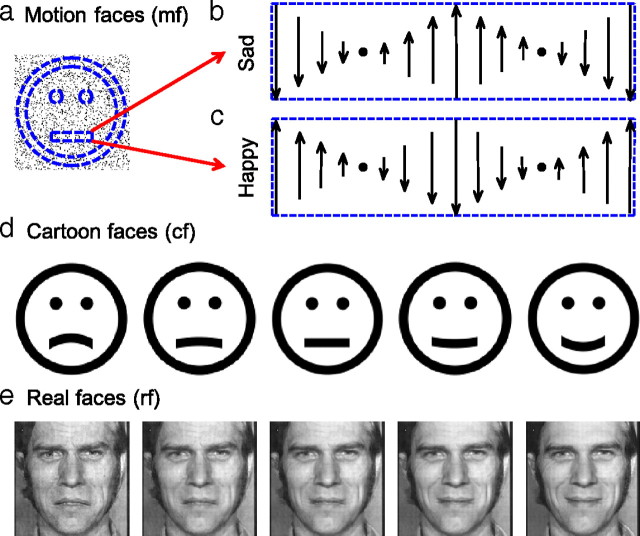Figure 1.
Examples of face stimuli used in this study. a, An illustration for second-order motion faces with motion gradient-defined expressions. Dashed blue curves and lines define virtual regions for the face outline, eyes, and mouth. Dots inside the face outline and eye regions flickered at 10 Hz. b, c, Dots inside the mouth rectangle carried opposite motion gradient patterns to produce sad and happy expressions. The vertical arrows indicate the velocity of the dots in that column. d, Static cartoon faces generated by our anti-aliasing program. The mouth curvature varied from concave to convex to produce a spectrum of sad to happy expressions. e, Real faces derived from two images from the Ekman PoFA database with MorphMan 4.0.

